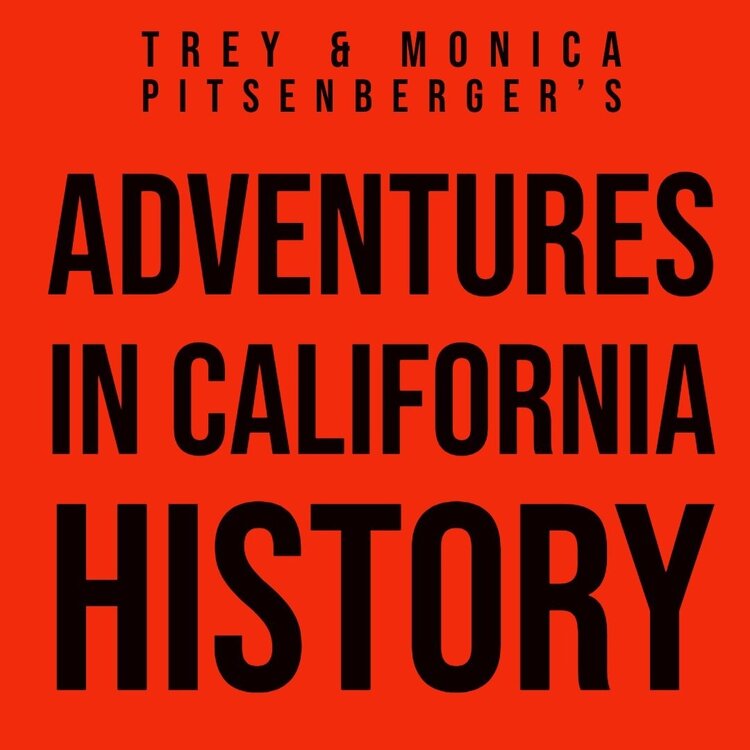Spenceville is more a name on the map than an actual town. Our interest in the townsite arose from our research on The Emigrant Trail. That trail passed this way after leaving Rough and Ready's and headed downhill to Johnson's Ranch, near Wheatland. We have found bits and pieces of the route between Wheatland and Rough and Ready and are trying to put those pieces together into one path.
The former town of Spenceville lends its name to the Spenceville Wildlife Area, encompassing over 11,400 acres around and including the townsite. Driving on the roads in the wildlife area is a treat, as the landscape is low rolling hills, dotted with many Blue Oaks and Grey Pines. Few people are living out this way, so you get a feeling of being away from it all, which we find exciting, but some might find “lonely.”
The first bridge we spotted headed into Spenceville. We later learned these were “bridges” for tank training during WWII.
Driving towards the old townsite, we spotted an old rock retaining wall for a road on the other side of Dry Creek. We wondered if this was the old wagon road, but why was it on the other side of the creek? Further on, we came to a concrete bridge on our side of the stream. Soon we came upon another bridge, then another, and soon we had counted five separate bridges. With all these bridges, this must have been a vital crossroads back in the day.
The second and longest bridge at Spenceville.
There are no interpretive signs anywhere near the Spenceville site, so any history will need to be drawn out later at home through research. Until then, we'll explore the area and take photos and video of the site. We were visiting in December, during the week, so it was hushed, and we didn't see another soul out there. The ground and pathways in the area are copper-red, resulting from the copper mines that gave Spenceville an economic boost in the 1860s.
Two more bridges that had a contractors name and date 1912 etched into the concrete. The red cast of the ground is from the copper mines.
A resident of Purtyman's Ranch, Spencevilles earlier name, was digging a well for drinking water and came upon some copper in 1863. Mining commenced but only lasted until 1865 as the copper was a low grade, and working it after the costs of labor and materials was just too high. The mine lay dormant until The San Francisco Mining Company bought the property in 1872 and invested $15,000 in equipment to better extract the copper. A document from 1875 states,
“Work is being prosecuted on the copper-mine at Spenceville, in this county, under the superintendency of Mr. G. P. Deetkin, with every prospect of success. The shaft is down 100 feet, and the ledge at that depth is 70 feet in width. The rock is richly impregnated with native copper. The ore is taken out and roasted in a large furnace, after which it is turned into three large vats, upon which a stream of cold water is turned, and the copper, in a state of solution, is then conducted from the vats into a large cylinder of about 12 feet in diameter. In this is placed old or refuse iron, for which the copper has an affinity. The cylinder is made to revolve rapidly by steam, by which means the copper is collected on the iron. The superintendent thinks the process of separating copper from the ore in which it is contained is no longer a matter of experiment. There are many other ledges in the vicinity equally as rich, and are awaiting the success of working this one.” Raymond, Rossiter W (1875) Statistics Of Mines And Mining In The States And Territories West Of The Rocky Mountains; Being Тhе Seventh Annual Report United States Commissioner Of Mining Statistics, Government Printing Office 1875
Spenceville Copper Mine, 1880.
Looking at documents and maps from the late 1800’s we found out that copper was another mineral that was mined extensively in “The Mother Lode,” and especially in The Spenceville area. This site utilized 150-foot shafts to remove the ore for processing. In 1880 a cave-in occurred and the mine started to dig an open-pit instead of putting in new underground shafts. The open-pit eventually reached 300 feet long, 70 feet wide, and 75 feet deep. One hundred fifty thousand tons of ore, averaging about 5% copper was removed, bagged, and shipped to Boston, MA. for final processing.
The date 1912 etched into the copper hued concrete of one of the bridges.
1888 was the year The San Francisco Copper Mine and Reduction Works ended their mining activities on the site. The company had removed all the easier to mine copper, and the prices of copper had dropped on the market. They sold the property to the Imperial Paint Company and Copper Works that made a Venetian red paint pigment from the leftover copper. More on that company and the rest of the story of Spenceville at my next post.





